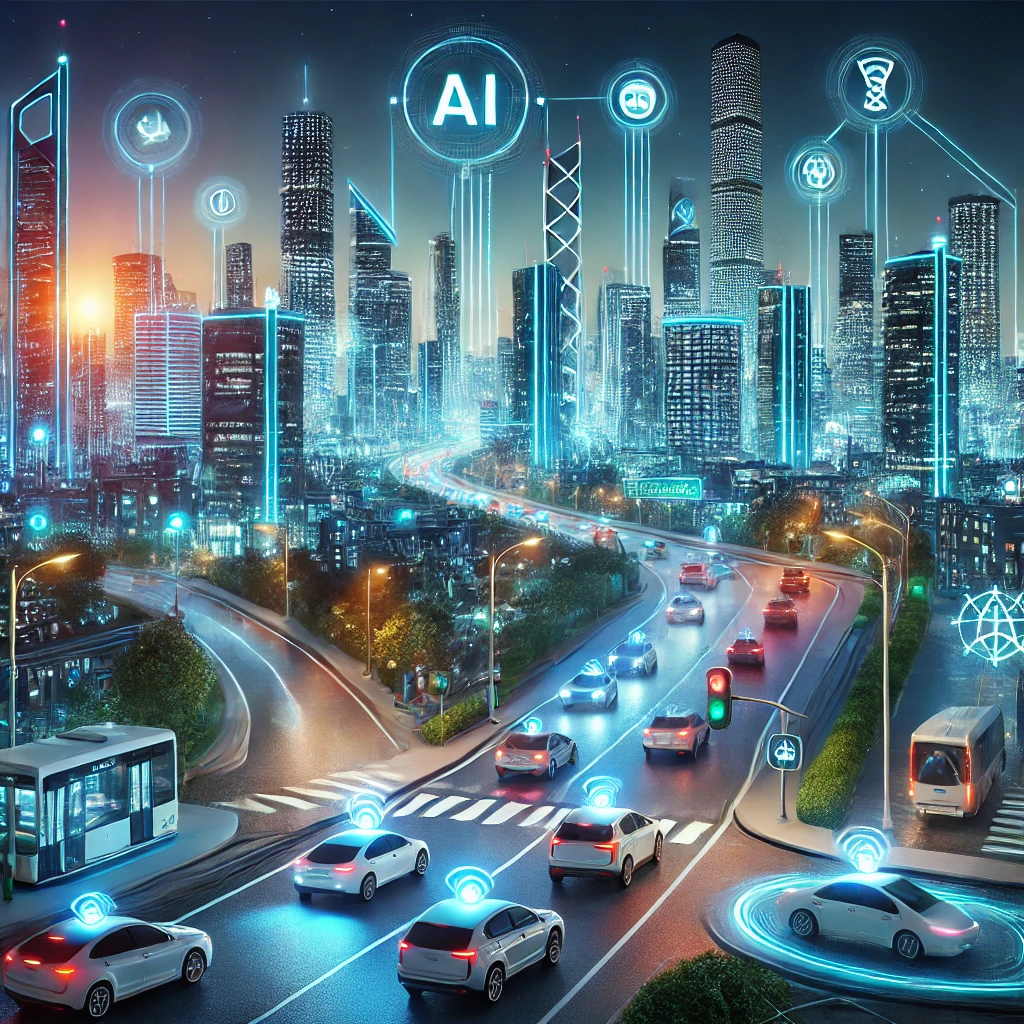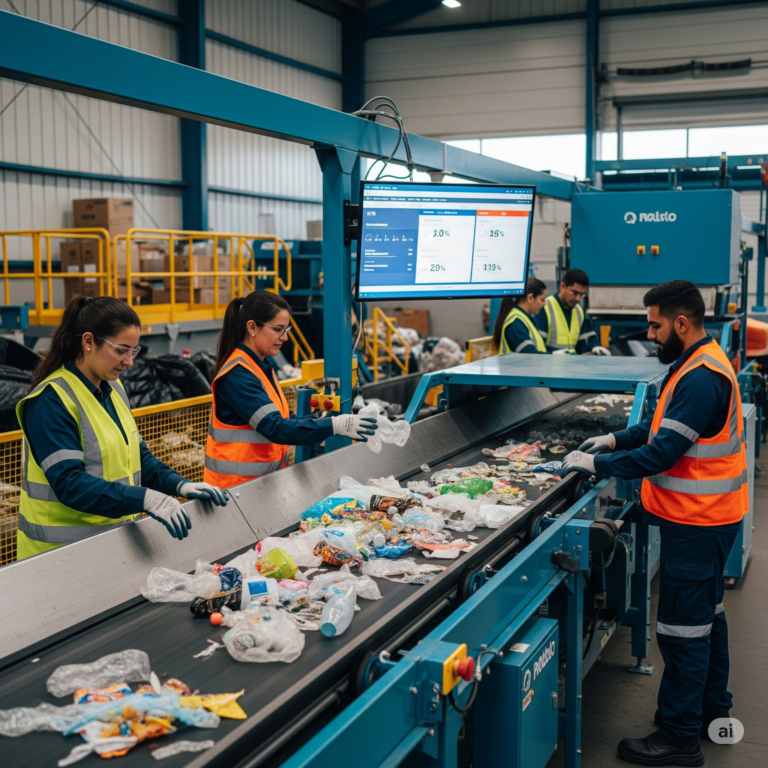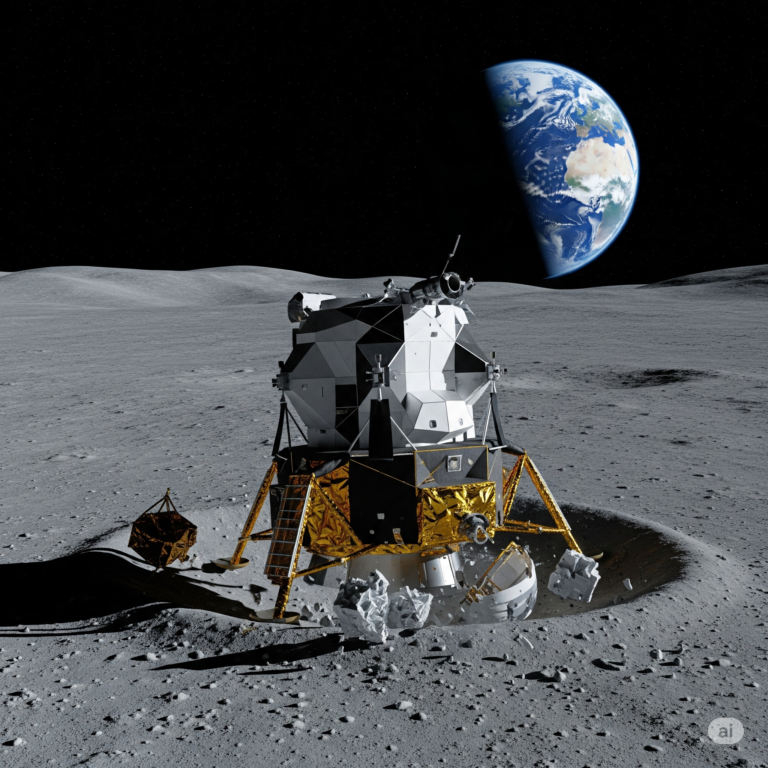Introduction
As urban populations continue to grow, cities face increasing challenges in traffic congestion, energy consumption, pollution, and sustainability. Traditional infrastructure is struggling to keep up with these demands, leading to inefficiencies and environmental degradation. However, the rise of Artificial Intelligence (AI) is revolutionizing urban management by enabling smarter, more efficient cities.
Smart cities leverage AI-driven technologies to optimize traffic flow, reduce energy consumption, and enhance overall urban sustainability. From AI-powered traffic management systems that reduce congestion to intelligent energy grids that maximize renewable energy usage, AI is reshaping how cities function.
This article explores how AI is transforming traffic and energy management in smart cities, the benefits of AI-driven urban planning, the challenges that come with it, and what the future holds for AI-powered urban environments.
1. What Are Smart Cities?
A smart city is an urban environment that uses AI, IoT (Internet of Things), big data, and automation to improve infrastructure and services. The primary goal of a smart city is to enhance efficiency, sustainability, and the quality of life for its citizens.
Key Features of a Smart City
✔ AI-Powered Traffic Management – Intelligent traffic systems that optimize signal timing and reduce congestion. ✔ Smart Energy Grids – AI-driven electricity distribution that optimizes power usage and integrates renewable energy sources. ✔ IoT-Enabled Sensors – Collects real-time data on air quality, traffic flow, and energy usage to improve urban planning. ✔ Autonomous Public Transport – AI-controlled buses, trains, and ride-sharing fleets to improve mobility. ✔ Sustainable Infrastructure – Smart buildings that regulate energy consumption and water usage.
Smart cities analyze vast amounts of data in real time to create more livable and efficient urban spaces.
2. AI in Traffic Management: Reducing Congestion & Pollution
One of the biggest challenges in urban environments is traffic congestion, which leads to increased fuel consumption, pollution, and wasted time. AI is transforming traffic management through real-time data analysis, predictive modeling, and automation.
A. AI-Powered Traffic Lights & Signal Control
🔹 Adaptive Traffic Signals – AI systems analyze real-time traffic patterns and adjust signal timing to minimize congestion. 🔹 Smart Intersection Management – AI can predict peak traffic hours and dynamically change road signals for better flow. 🔹 Vehicle-to-Infrastructure (V2I) Communication – Connected vehicles can interact with AI-controlled traffic lights to reduce waiting times and improve road safety.
✔ Example: Cities like Los Angeles and London use AI-driven traffic lights that adapt to real-time traffic flow, reducing congestion by up to 30%.
B. AI for Predictive Traffic Management
🔹 AI algorithms process historical and real-time traffic data to predict congestion patterns and suggest alternative routes. 🔹 GPS and AI-powered navigation apps like Google Maps and Waze provide real-time traffic updates, helping drivers avoid high-traffic areas. 🔹 AI-powered smart parking solutions reduce time spent looking for parking spots, decreasing urban traffic congestion.
✔ Example: Singapore’s AI-powered traffic system uses cameras and sensors to predict congestion and automatically reroute traffic, improving commute efficiency.
C. Autonomous Public Transportation & AI-Driven Ride-Sharing
🔹 AI is optimizing bus and train schedules based on passenger demand. 🔹 Autonomous ride-sharing services powered by AI reduce the need for private vehicle ownership. 🔹 AI-based micro-mobility solutions like electric scooters and bike-sharing systems enhance urban mobility.
✔ Example: Waymo’s self-driving taxis in Phoenix use AI to navigate traffic efficiently, reducing accidents and congestion.
3. AI in Energy Management: Creating Sustainable Cities
Energy consumption is another major challenge for cities. AI is revolutionizing how urban areas produce, distribute, and consume electricity to promote sustainability.
A. AI-Powered Smart Grids
🔹 Intelligent Demand Forecasting – AI predicts energy demand, optimizing power distribution. 🔹 Automated Load Balancing – AI ensures stable electricity distribution by adjusting supply based on real-time demand. 🔹 Grid Resilience & Outage Detection – AI detects faults in power grids and prevents blackouts before they occur.
✔ Example: Tesla’s AI-driven Powerwall and Powerpack store renewable energy and distribute it efficiently across cities.
B. AI in Renewable Energy Optimization
🔹 Solar & Wind Energy Prediction – AI forecasts weather patterns to maximize renewable energy production. 🔹 Smart Energy Storage Systems – AI manages battery storage to ensure efficient energy use. 🔹 AI-Optimized Power Plants – AI enhances the performance of hydroelectric, solar, and wind farms.
✔ Example: Google’s AI-powered wind farms have increased efficiency by 20% by predicting weather conditions and adjusting energy production accordingly.
C. AI for Smart Buildings & Energy Conservation
🔹 AI-powered smart thermostats adjust indoor temperatures based on occupancy and weather. 🔹 AI systems regulate lighting, heating, and cooling to minimize energy waste. 🔹 AI-driven waste management reduces power consumption by optimizing garbage collection schedules.
✔ Example: The Edge Building in Amsterdam, one of the smartest buildings in the world, uses AI-driven sensors to regulate lighting and temperature, reducing energy consumption by 70%.
4. Benefits of AI-Powered Smart Cities
AI-powered smart cities offer numerous advantages, making urban living more sustainable, efficient, and livable.
✅ Reduced Traffic Congestion – AI-driven traffic systems improve road efficiency and reduce commute times. ✅ Lower Carbon Footprint – Smart energy management minimizes waste and promotes clean energy use. ✅ Enhanced Public Safety – AI-driven security systems monitor crime and improve emergency response times. ✅ Improved Air Quality – AI-controlled pollution monitoring helps enforce clean air policies. ✅ Cost Savings – Smart cities optimize resource usage, reducing public spending on infrastructure maintenance.
5. Challenges & Ethical Considerations of AI in Smart Cities
Despite its benefits, AI-powered urban management faces several challenges:
🔹 Data Privacy & Security – AI-driven surveillance systems raise concerns about citizen privacy and data security. 🔹 High Implementation Costs – AI infrastructure requires substantial investment, making adoption difficult for developing cities. 🔹 Job Displacement – Automation in transportation and energy sectors could lead to job losses in traditional industries. 🔹 Bias in AI Algorithms – AI models must be designed fairly and inclusively to prevent discrimination in urban planning.
✔ Solution: Governments and technology companies must work together to develop transparent, ethical AI policies that protect citizen rights while promoting innovation.
6. The Future of AI-Powered Smart Cities
The future of smart cities looks promising, with continued advancements in AI and automation. Key trends include:
🔹 5G-Powered AI Systems – Ultra-fast connectivity will enhance real-time AI decision-making. 🔹 AI & Blockchain Integration – Secure, decentralized urban management solutions. 🔹 Hyperloop & AI-Driven Transport – Faster, AI-managed transportation systems. 🔹 AI-Enabled Disaster Management – Predicting and responding to natural disasters using AI models. 🔹 Sustainable AI Development – Eco-friendly AI systems for minimal environmental impact.
Smart cities powered by AI will improve quality of life, enhance sustainability, and create safer urban environments.
Conclusion
AI is revolutionizing traffic and energy management in smart cities, making urban living more efficient, sustainable, and connected. From AI-powered traffic signals to smart energy grids, this technology is reshaping city infrastructure for the better.
As AI continues to evolve, its integration with smart cities will enhance urban mobility, reduce carbon footprints, and optimize energy consumption, paving the way for a greener, smarter future.
The question remains: Are we ready to embrace AI-driven smart cities, or will we face new challenges in our quest for innovation?












+ There are no comments
Add yours